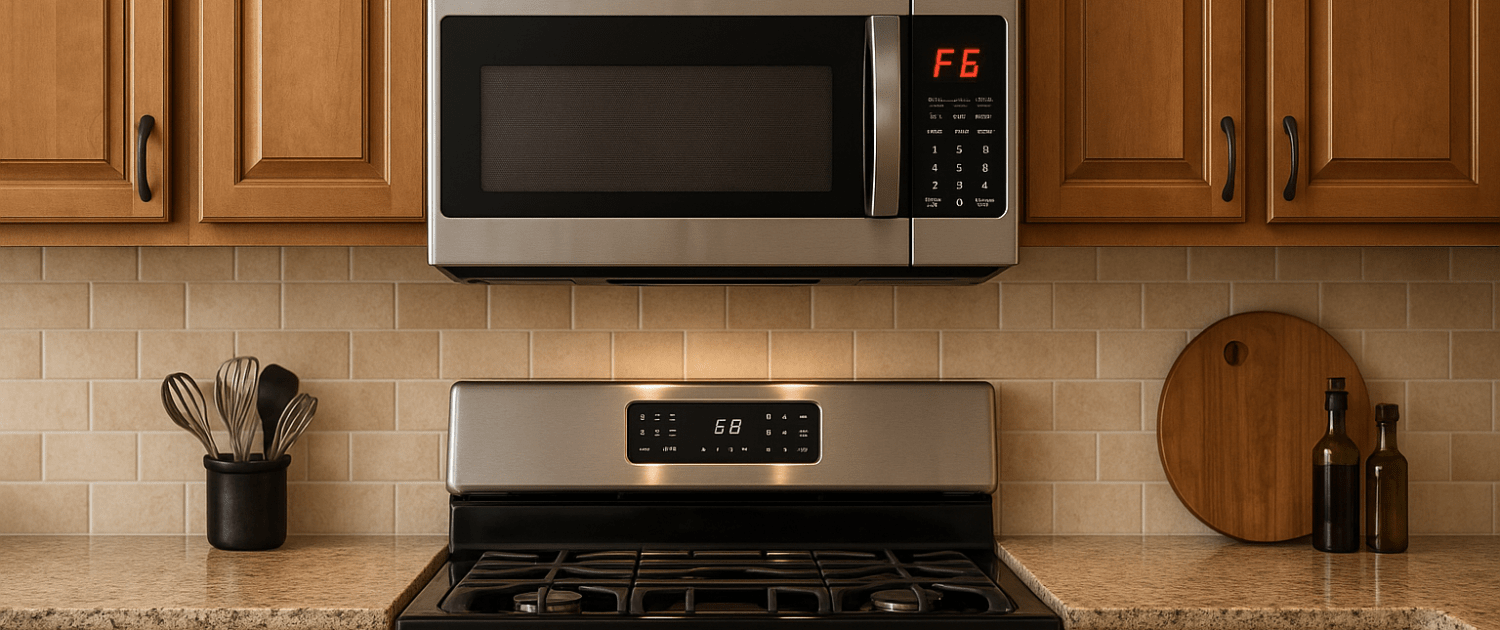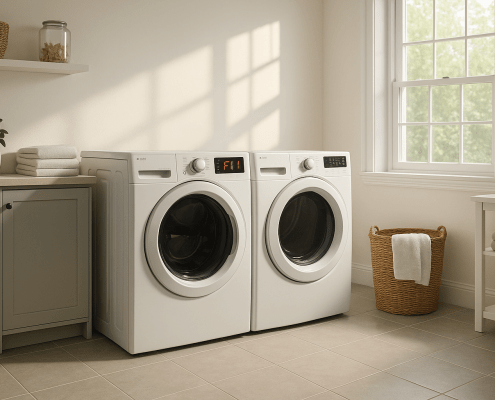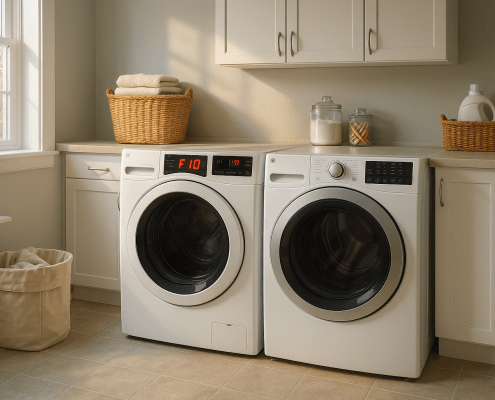What the F6 Error Code Means on Your Whirlpool Microwave
Steven E / Friday May 9, 2025
Having an issue with your microwave oven displaying an F6 error code? This error code typically indicates a problem with the microwave relay on the internal relay control board. While this may sound concerning, the good news is that this is usually an easy issue to diagnose and repair yourself with some basic tools and troubleshooting steps.
If you find out that you need any replacement parts for your appliance while you’re troubleshooting, you can enter your model number at AppliancePartsPros.com to order them. Most orders arrive in just two business days, and we have thousands of free guides to show you how to install your new parts.
The information in this article may not apply to your specific appliance model. We recommend consulting your manufacturer’s documentation or contact us with any questions.
What is the F6 error code?
Microwave ovens have built-in diagnostic systems that alert users to issues via numerical error codes shown on the display. The F6 error specifically indicates a problem with the communication between the main microwave relay and the relay control board.
This microwave relay, sometimes called the MW relay, controls the voltage signals that turn the magnetron and microwave generation on and off. When the display shows F6, it means this relay circuit is not communicating properly with the oven’s control board, preventing the magnetron from receiving the signals it needs to produce microwaves.
Without fixing this communication error, your microwave will not be able to actually generate any microwave energy to cook! So resolving an F6 code is necessary to get your oven back up and running. The good news is, with some basic troubleshooting you can often repair this issue yourself.
Safety precautions
When working on any appliance, remember to keep safety first. Here are some tips to keep in mind:
- Always power off and unplug your appliance or switch off the circuit breaker before attempting any maintenance or replacement work. This keeps you safe by preventing any risk of injury from electric shock.
- Wear insulated work gloves to protect your hands from sharp metal parts, pinching hazards and debris.
- Take your time and don’t rush while working to prevent accidents and personal injuries.
- Work in a well-lit area so you can clearly see and access the interior parts.
- Clear your workspace of clutter and other obstacles. Keep children and pets away from the work area.
- Never work on internal parts with bare wet hands. Make sure the work area is completely dry.
- Check your user manual to see if there are specific installation or safety instructions for your part or appliance.
- Be gentle when handling or removing parts. Excessive force might damage the appliance or cause injury.
- Wear safety glasses when working with chemicals, dust or cleaning large debris to prevent injury.
- If the appliance has recently been used, give it plenty of time for any heating parts to cool down before working on it.
- Take pictures or make a note of wiring terminals or other connections before disconnecting to prevent any problems with reassembly.
- When working with wires, avoid touching any exposed wires or terminals. If you need to touch a wire, use a non-conductive tool or wear insulating gloves to prevent electrical shock.
Microwave safety
Microwaves contain high-voltage parts and have the capacity to store voltage even when they’re disconnected from a power source. Please be very careful while working on a microwave’s internal parts to avoid electrocution, which has the potential to cause serious injuries or death.
- Always unplug the microwave before troubleshooting or making repairs.
- Discharge the high-voltage capacitor before working on high-voltage parts to eliminate the risk of electric shock. Do not continue if you are uncomfortable or unfamiliar with this process.
- Never attempt to run the microwave while its casing is open or when internal parts are exposed. Always completely reassemble the microwave before testing or using it.
- Never attempt to bypass any microwave safety features.
- Never run the microwave empty. Use a glass of water for test running.
- Removing a microwave from over the range is a two person job due to the weight and potential for damage. Follow manufacturer installation instructions for reinstallation over the range after repair.
Troubleshooting steps
When your microwave shows an F6 error, use the following troubleshooting steps to diagnose and resolve the issue:
Step 1: Inspect the relay
- Locate the wiring harness that connects to Relay 4903 on the relay control board.
- Visually inspect the wiring for any signs of damage, such as frayed, cracked, or burnt insulation, or loose connections.
- Use a multimeter to test the continuity of the wiring, ensuring there are no breaks or shorts in the circuit.
- If you find any issues with the wiring, carefully repair the damaged areas or replace the entire wiring harness as needed.
- Visually inspect the relay contacts to see if they have welded closed, which would indicate a failure of the relay.
Step 2: Reassemble and test
- Once you have repaired or replaced any damaged components, carefully reinstall all the parts and panels, ensuring they are properly secured.
- Plug the microwave oven back into the power source or reconnect the power supply.
- Test the microwave oven’s operation to ensure the issue has been resolved and no new problems have arisen.
Step 3: Replace the electronic control
- If the problem persists after the previous steps, unplug the microwave oven or disconnect the power supply again.
- Locate and remove the electronic control board, which is typically secured with screws or clips.
- Install a new electronic control board, making sure to properly connect all the wiring harnesses.
- Reinstall all the parts and panels, ensuring a secure fit.
- Plug the microwave oven back in or reconnect the power supply and test the operation.
More information
Thank you for reading! We hope you found this information useful to get your microwave working again.
If you have any other appliance repair needs or projects, don’t hesitate to explore our thousands of free videos and troubleshooting guides available. If you need replacement parts or some extra help, grab your model number and head over to AppliancePartsPros.com, where you can chat with a pro, order parts, read our DIY blog, and more.
Be sure to subscribe to us on YouTube and follow us on Facebook, Twitter, and Instagram!
With nearly a decade of experience in providing top-notch customer service regarding appliance parts and repair, Steven enjoys sharing practical advice, troubleshooting tips, and interesting information to help readers stay informed.





